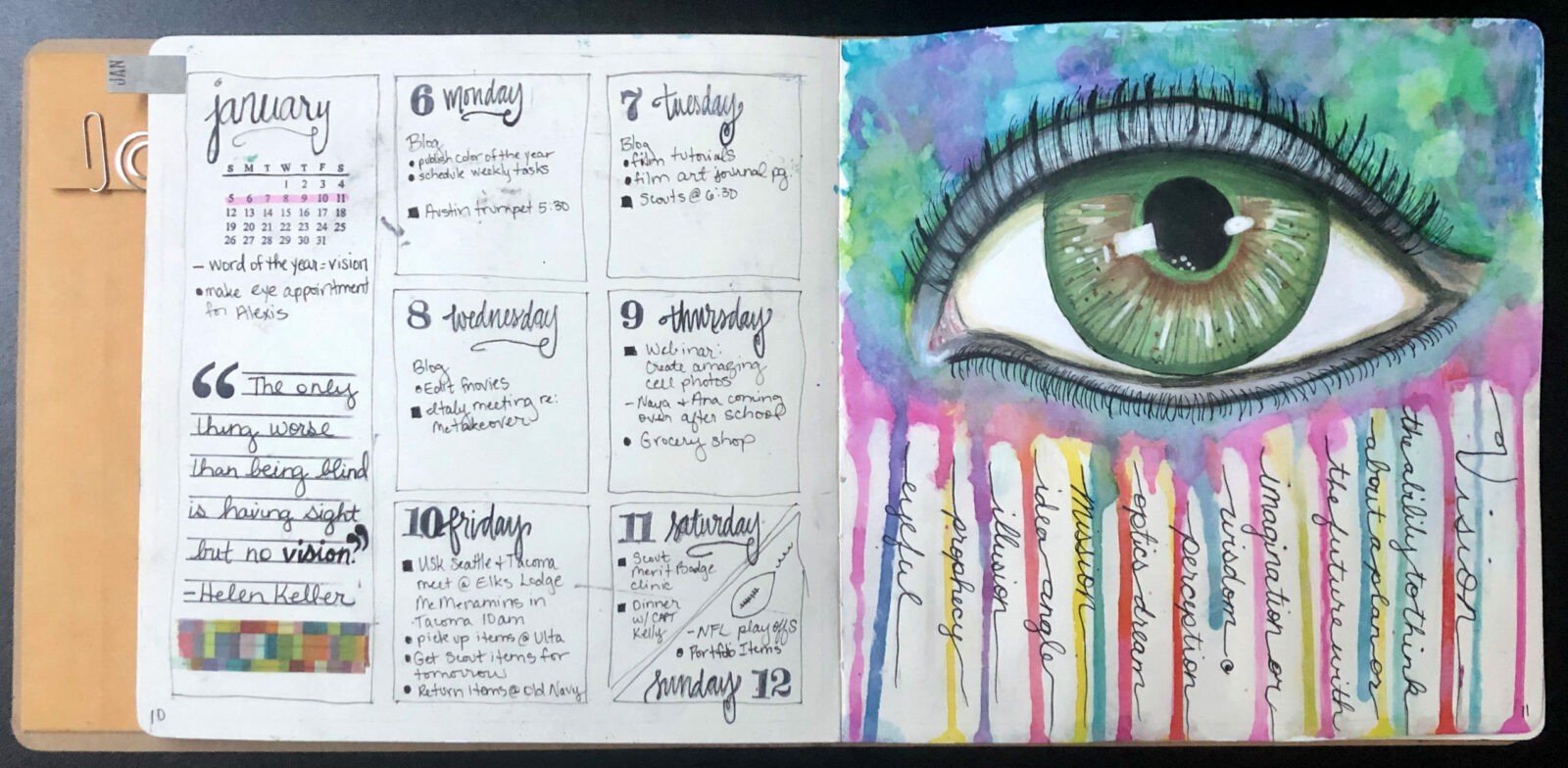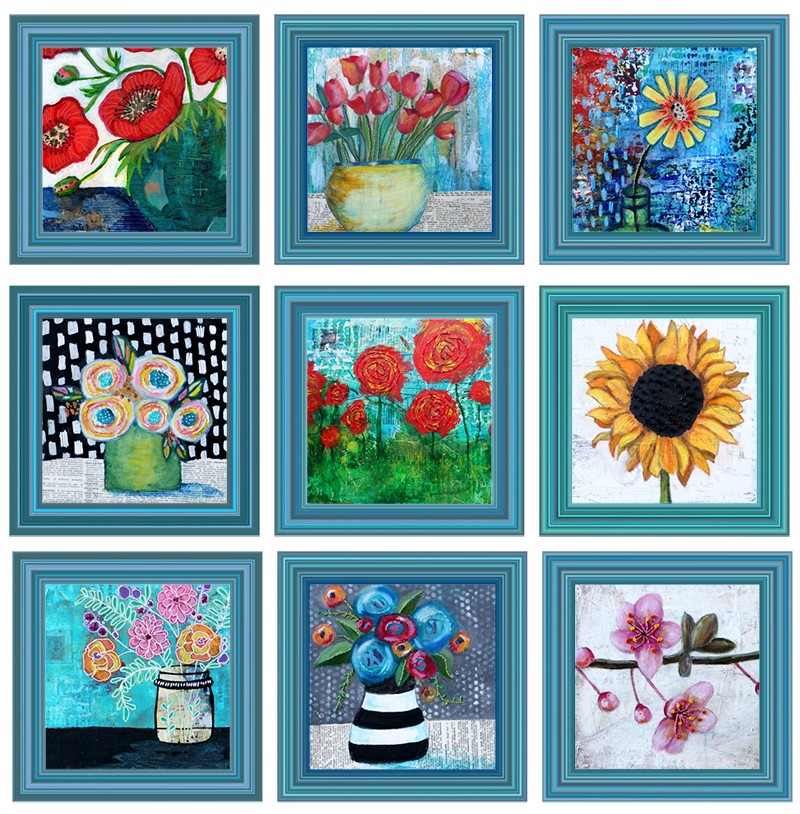January is a time of natural beginnings, new intentions, and goal setting. Sadly, a lot of well-intentioned New Year’s Resolutions fall by the wayside before January even ends. With just a few steps, you can get right back on track to achieve your goals and intentions.
Why Goal Setting is Important

Setting goals truly does help a person succeed. According to a study published in the Journal of Clinical Psychology, 46% of people who made New Year’s resolutions successfully achieved them. The pessimists probably just said to themselves, “that means over 50% failed.” While that’s true, only 4% of people who did not make resolutions reported success towards accomplishments.
People who made resolutions had a higher rate of success because they already exhibited self-efficacy, skills to change, and readiness to change. So, to put it more plainly, setting a goal puts you in the mindset to achieve.
How to Determine Your Goals
To decide what goals to set, conjure Shakespeare and, “to thine own self be true.” Think about what works best for you. Are you more likely to succeed at a goal of doing a warm-up art exercise 5 times a week or creating a 15 minute postcard landscape? Those are both attainable, but they vary in focus. What works best for you?
- Structure vs Freedom
- Time vs Output
- Process vs Product
Brainstorm
 Brainstorm all of your ideas for things you want to change, complete, do, have, start or stop. You might even take a few days for your brain dump — you’ll find yourself coming up with new ideas at the most random times. Don’t edit or limit your list. Writing all your ideas down will help other ideas generate. Use the bonus questions at the bottom of this post to help you come up with some goals. Try to brainstorm 25 or so.
Brainstorm all of your ideas for things you want to change, complete, do, have, start or stop. You might even take a few days for your brain dump — you’ll find yourself coming up with new ideas at the most random times. Don’t edit or limit your list. Writing all your ideas down will help other ideas generate. Use the bonus questions at the bottom of this post to help you come up with some goals. Try to brainstorm 25 or so.
Limit Your Goals

A common mistake is setting too many goals. Enthusiasm is fantastic, however overcommitting is the equivalent of setting yourself up for failure. Take it from me — I’ve learned this repeatedly.
So, the next step is to limit yourself to the few you REALLY want to accomplish. Choose no more than 5 goals. Here are a couple of prioritization exercise to help you determine which goals to choose:
Two Lists
Use Warren Buffet’s Two-List technique to narrow down your goals. Of all of the goals you brainstormed, circle the 5 most important. According to Buffet’s philosophy, those are the only goals you should work on. The others should not be touched until those 5 are accomplished.
Bubble Sort
 Another incredibly visual way to determine your priorities is to write your goal ideas down on sticky notes and place them in a horizontal line on the table in front of you. Look at the first 2 and ask yourself, “Which of these is more important?” Move the most important one to the left. Then, evaluate the second and third sticky note using the same criteria. Repeat the exercise up and down the line until your goals are in order of importance from left to right.
Another incredibly visual way to determine your priorities is to write your goal ideas down on sticky notes and place them in a horizontal line on the table in front of you. Look at the first 2 and ask yourself, “Which of these is more important?” Move the most important one to the left. Then, evaluate the second and third sticky note using the same criteria. Repeat the exercise up and down the line until your goals are in order of importance from left to right.
Set Attainable Goals
Now that you determined your goals, ensure you end up in the successful 46% by rewriting them following the SMART goal principle.
SMART Goals
 SMART goals are established using a specific set of criteria that ensures your goals are attainable. SMART is an acronym that stands for Specific, Measurable, Achievable, Relevant, and Time-Bound.
SMART goals are established using a specific set of criteria that ensures your goals are attainable. SMART is an acronym that stands for Specific, Measurable, Achievable, Relevant, and Time-Bound.
When writing a SMART goal, you work through each of those terms to build a goal that shares exactly what needs to be accomplished, when it needs to be accomplished by, and how you’ll know when you’re successful. Setting goals this way is helpful, because it eliminates vague ideas, sets a clear due date, and makes it easier to track progress and identify missed targets.
Example
 For example, one of my art goals is to continue to work in a Bujo Art Journal this year, but that isn’t a SMART goal. A small tweak of words makes it SMART: I will complete one art journal page a week. Now it is:
For example, one of my art goals is to continue to work in a Bujo Art Journal this year, but that isn’t a SMART goal. A small tweak of words makes it SMART: I will complete one art journal page a week. Now it is:
- specific (I’ll complete an art journal piece)
- measurable (there should be 52 at the end of the year)
- achievable (for me, weekly is achievable)
- relevant (art is my passion)
- and time-bound (weekly)
Short-Term vs Long-Term Goals
Of note, you might have chosen some short-term goals and some long-term goals. Now that you determined the measurability, you should be pretty clear about which goals you can accomplish in 6 months or less and which ones will take longer. The longer term goals will need to be broken down into enabling goals. Enabling goals are short-term goals to help reaching your long-term goals more manageable. Use the SMART principle for those, too.
Tracking Your Progress
Beyond just making goals, it’s important to track your progress. In a study conducted by Dr. Gail Matthews, a psychology professor at the Dominican University in California, it was concluded that you’re 42% more likely to achieve your goals if you write them down on a regular basis.
 Here are a few ways you can document your resolutions:
Here are a few ways you can document your resolutions:
- Write them in a journal
- Draft an email to yourself
- Store them in your phone notes
- Print and tape them to the wall or your bathroom mirror
A great way to track your progress is in a Bujo Art Journal. Check out these posts to see how it can help you document your goals and track your progress.
You’re 42% more likely to achieve your goals if you write them down on a regular basis.”
 Another great way to record your goals is to turn them into a work of art using images and/or creative lettering. Drawing what you need to get done can be fun. Plus, research shows that we remember pictures better than words, so drawing your goals will keep them more at the forefront of your mind.
Another great way to record your goals is to turn them into a work of art using images and/or creative lettering. Drawing what you need to get done can be fun. Plus, research shows that we remember pictures better than words, so drawing your goals will keep them more at the forefront of your mind.
Accountability
It’s great to make goals for yourself and write them down, but if no one else knows about them, they become easy to ignore. Plus, if don’t achieve them, no one will notice or care. On the other hand, announcing your intentions forces a sense of accountability and creates a group to celebrate your successes.
 Go public with your goal(s) to put more of a sense of obligation upon yourself. Write a post on social media announcing your goal, join a group of people on Facebook with similar goals, or tell your mom and dad your plans. If they’re anything like mine, they’ll ask you about it all the time. Lol.
Go public with your goal(s) to put more of a sense of obligation upon yourself. Write a post on social media announcing your goal, join a group of people on Facebook with similar goals, or tell your mom and dad your plans. If they’re anything like mine, they’ll ask you about it all the time. Lol.
My Goals
To prove I practice what I preach, here are my art goals for the year:
- I will complete one art journal page a week.
- I will complete the 100 Day Project in 125 days or less.
- I will create my first online art course and launch it by the end of the year.
- I will cull my art studio of unused junk by June.
- I will release and sell a new collection of work in my online shop by the year’s end.
Bonus: Art Goal Prompts
 To help with your list, think about these questions and topics as you brainstorm goals:
To help with your list, think about these questions and topics as you brainstorm goals:
- Portfolio: Do you have a portfolio? Does it need any updates? Do you have an artist statement?
- Art Studio: Is your studio space conducive to your work? Are there any improvements you’d like to make?
- Galleries and Exhibitions: Would you like to exhibit your work in a gallery or a specific show? Do you want to curate your own show?
- Social Media: What social networks should you add or remove? What do you want to improve upon? Audience building? Consistency posting? Videos? Engagement?
- Marketing: Do you have a brand? Logo? Website? Are you consistent in your messaging, colors, typography? Do you update your website regularly?
- Design and Merchandise: What can you do to make you work more marketable? What are some design changes you can make to your brand? Do you want to license your work?
- Sketchbook and Journaling: How do you document your process and ideas?
- New Projects: Is there a new medium you want to try? Is there a project that has been on the back burner that you want to begin? Are you showing up consistently to work?
- Press and Publications: Do you blog? What type of press would you like to be published in?
- Education, Skills, and Teaching: What skills do you need to improve to tackle an important goal? What are some classes and workshops you can attend to learn more?
- Collaborations: Who would be your dream artist to collaborate with? How can you collaborate with your viewers and patrons through your artwork?
- Awards and Contests: What award would be great on your resume? Are there any contests you want to participate in?
- Current Body of Work: What ideas, plans, and goals do you have for your current work? What is the next step you could take to push it forward?
- Commissions: How many people approach you for custom creations? How can you reach your target audience better and inform them you are open for commissions?
Achieving goals takes more than just creating them. If you choose your goals carefully, write them down, announce them publicly, and track your progress, you will surely attain your goals. Download the free Goal Setting Workbook when you subscribe to Artful Pursuits to help you complete all the steps with ease.
Get Your Free Goal Setting Workbook
simply subscribe to Artful Pursuits for the download link.







